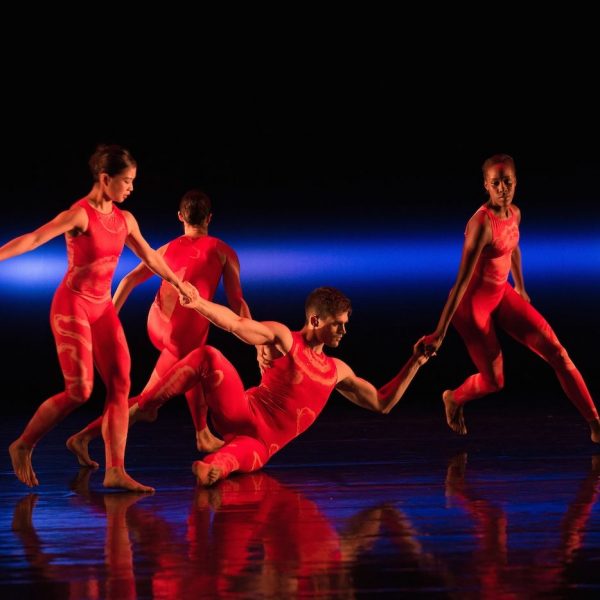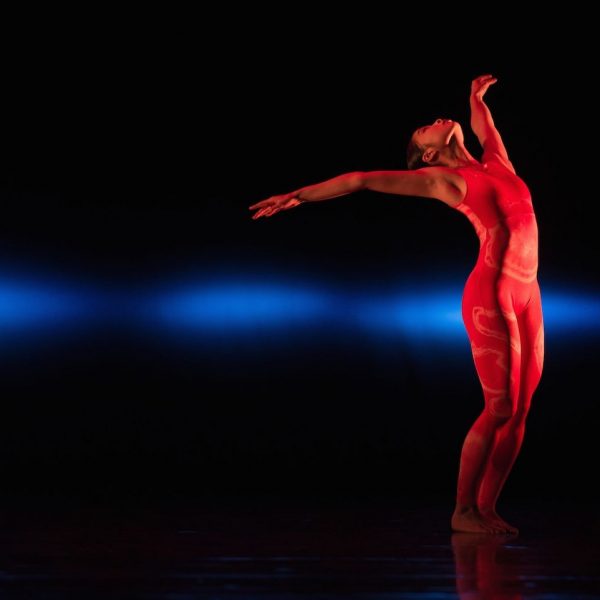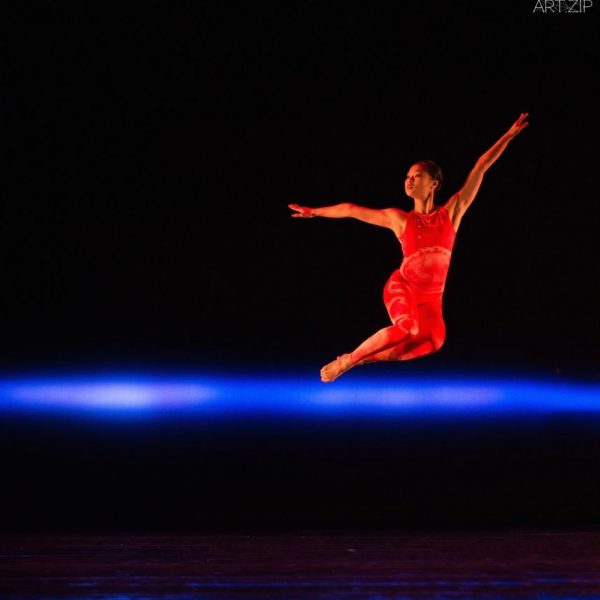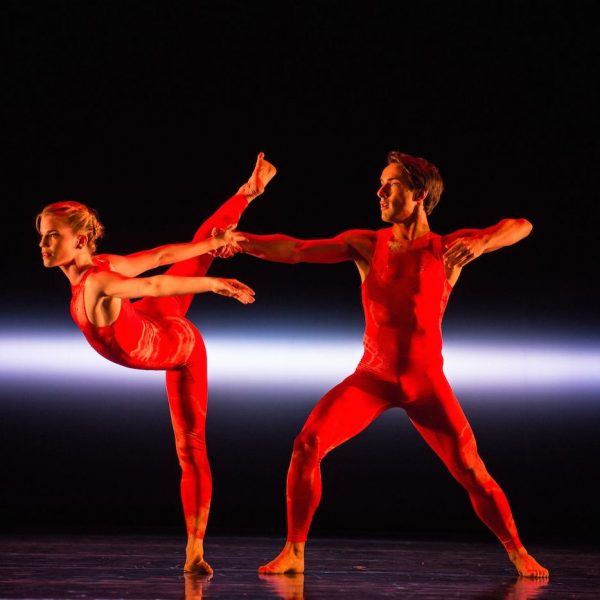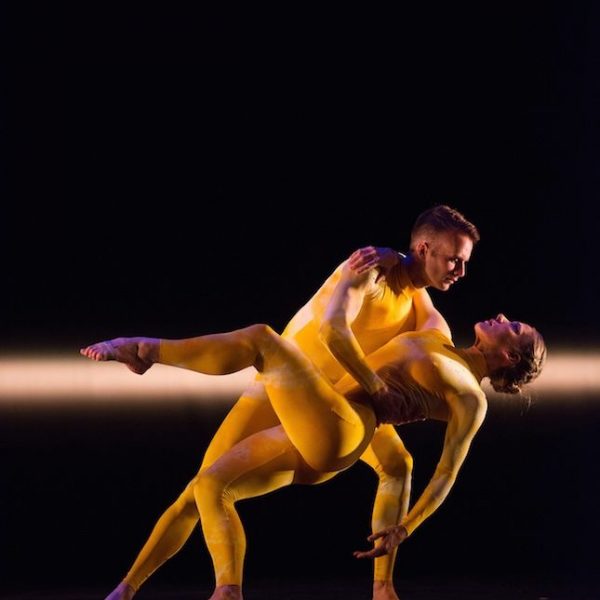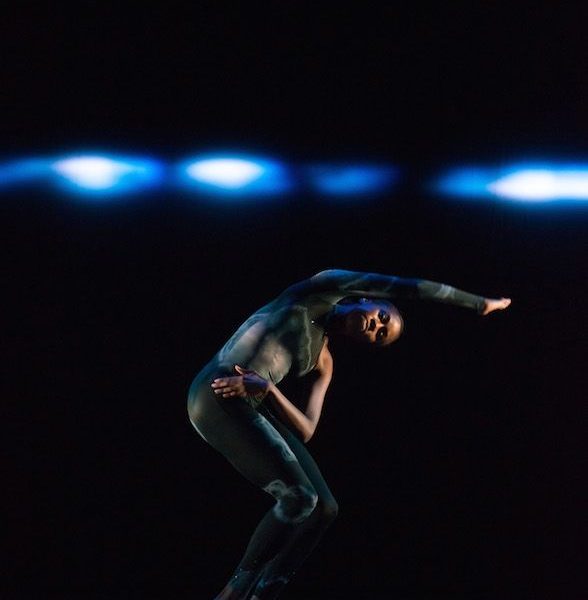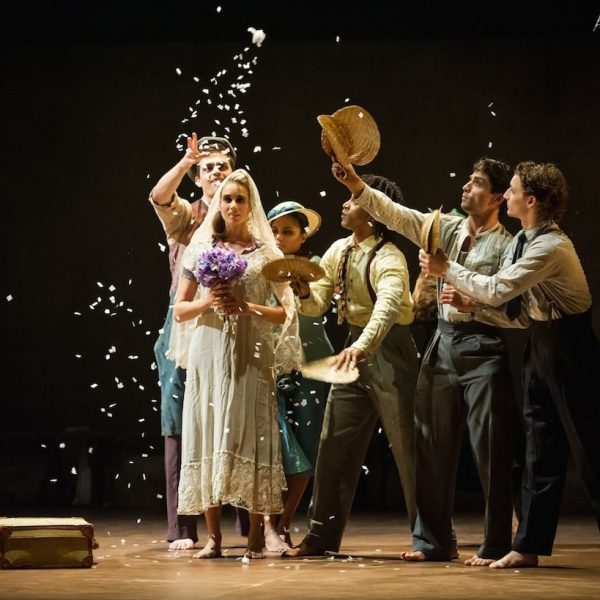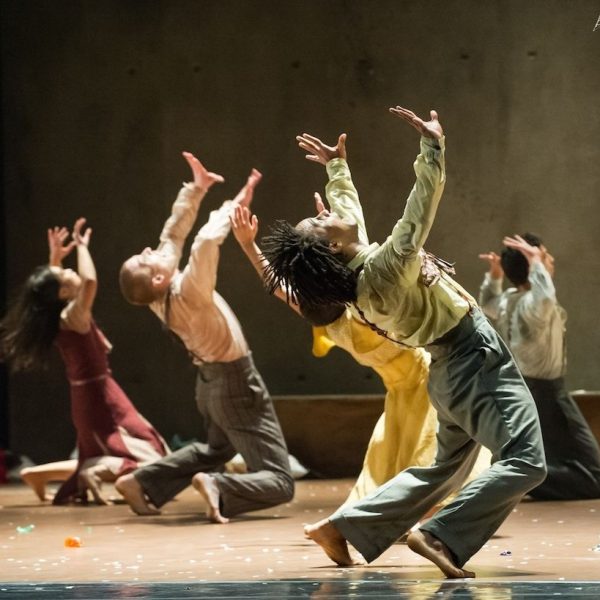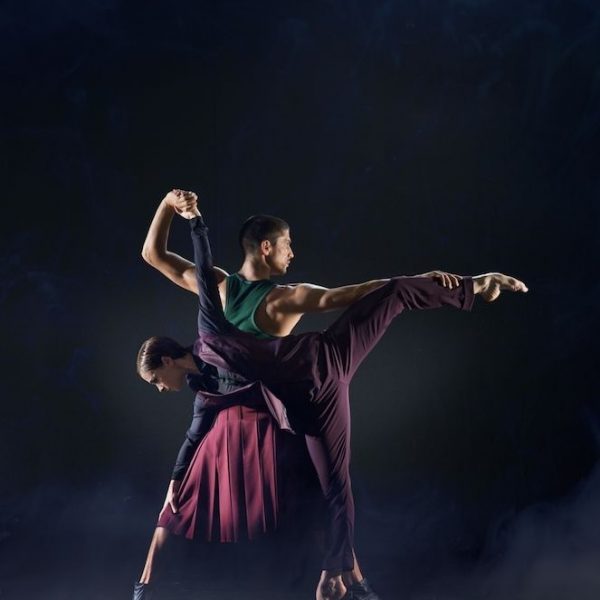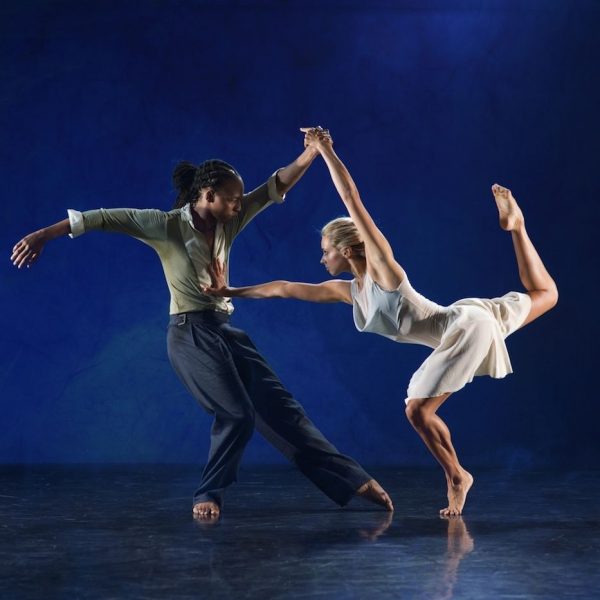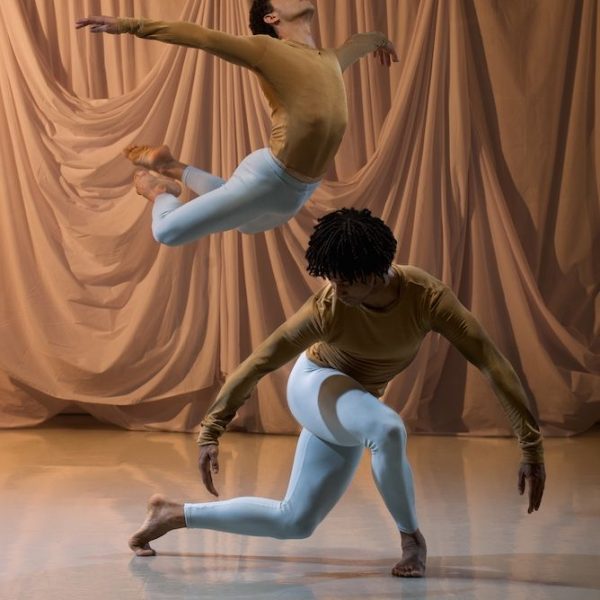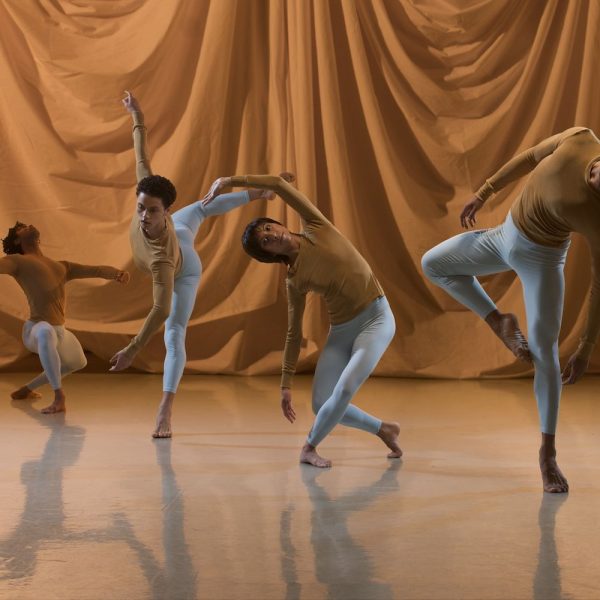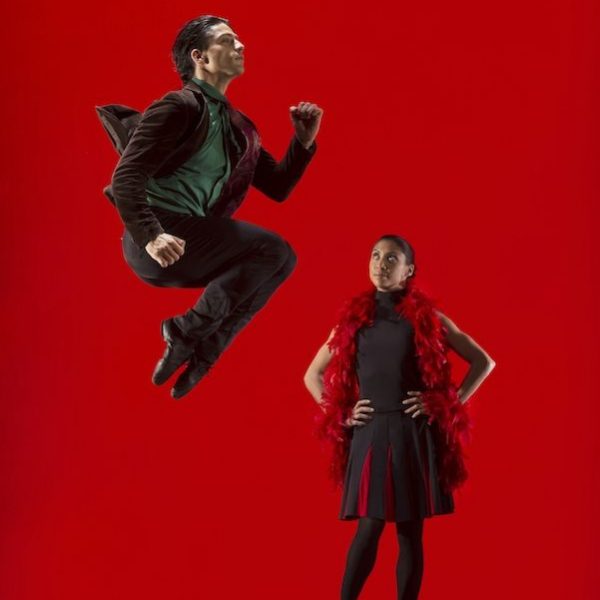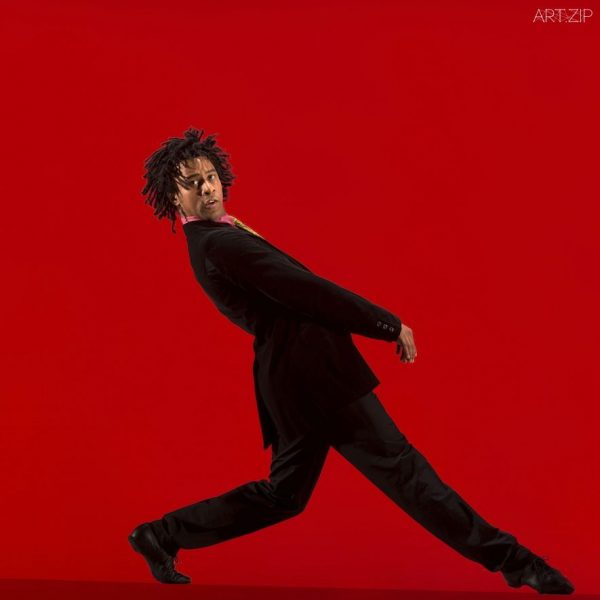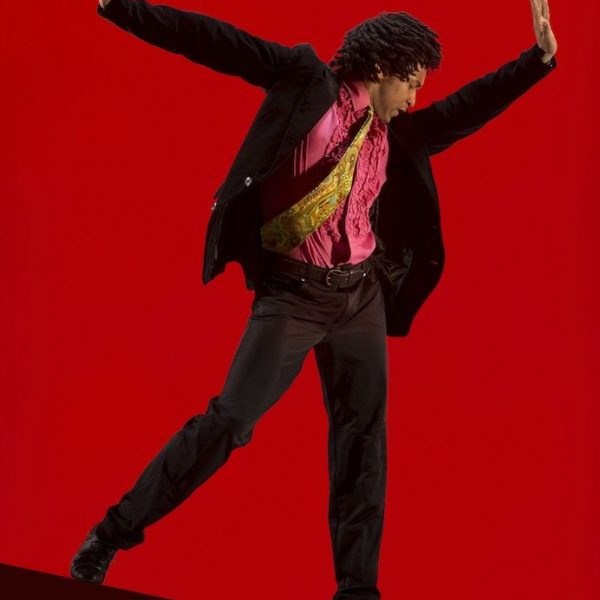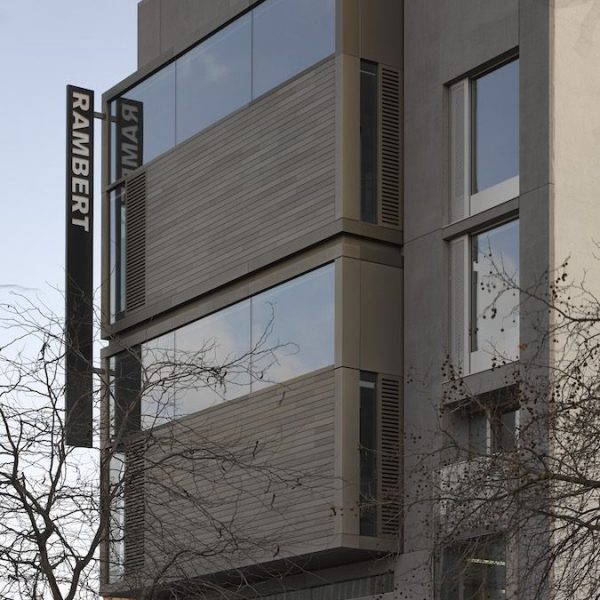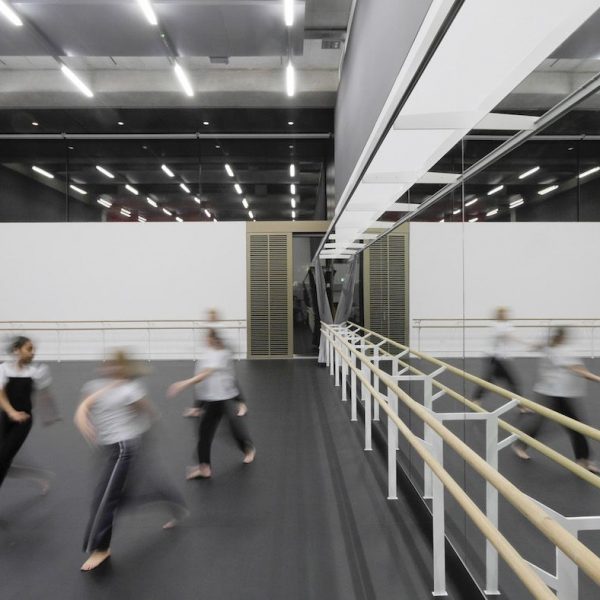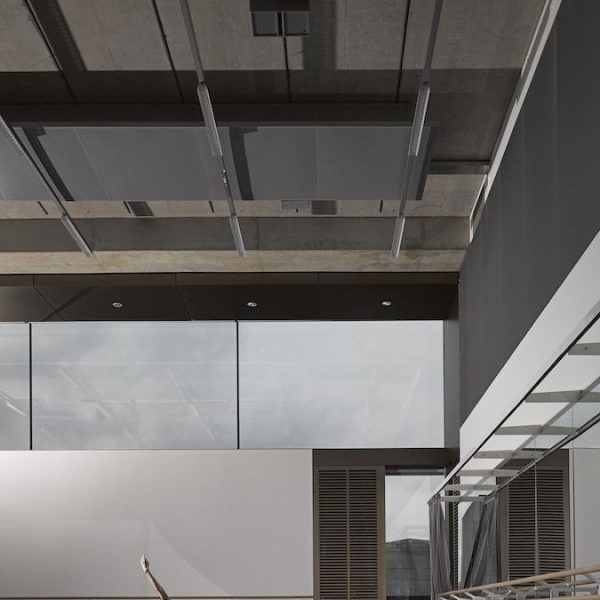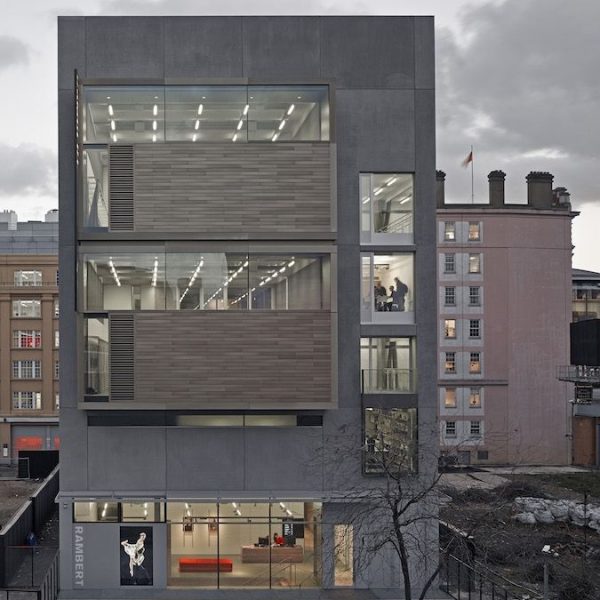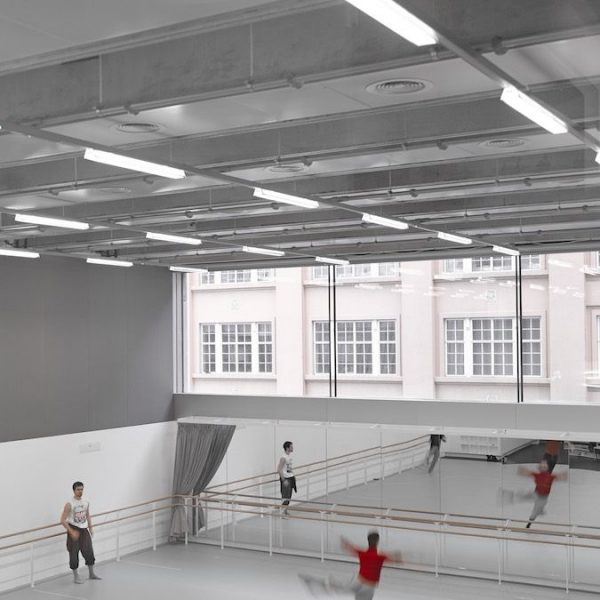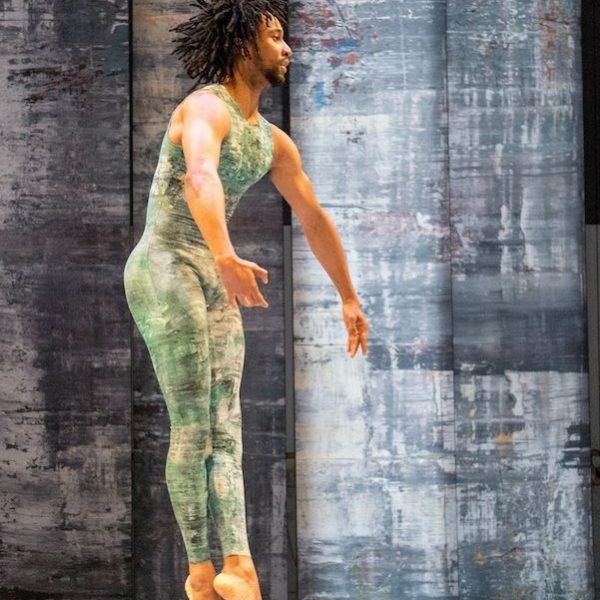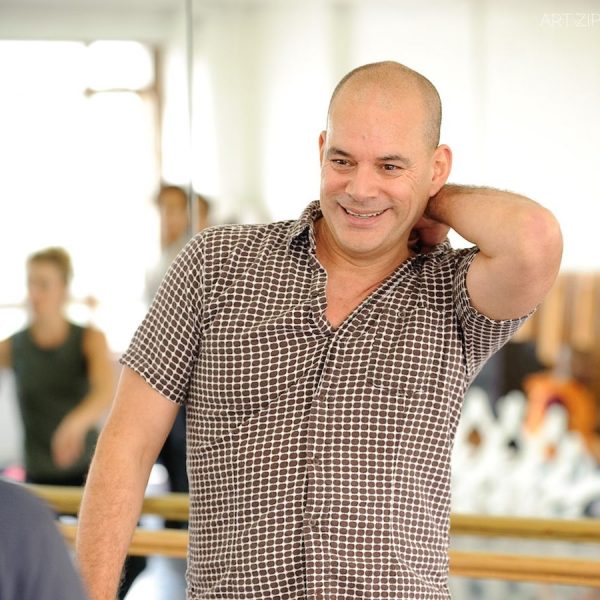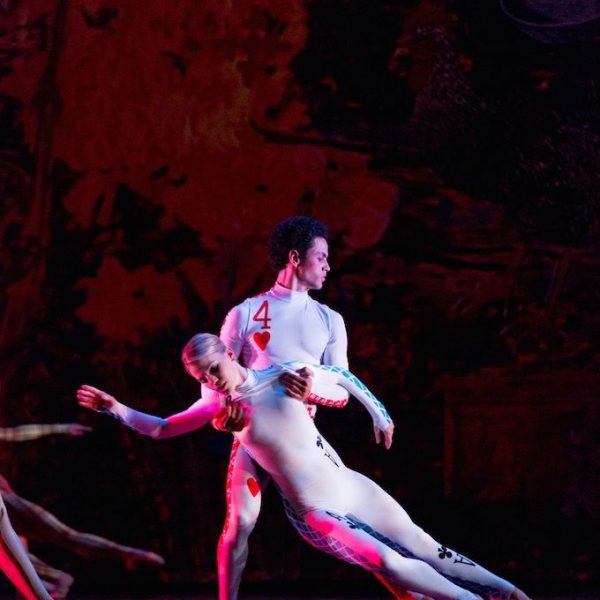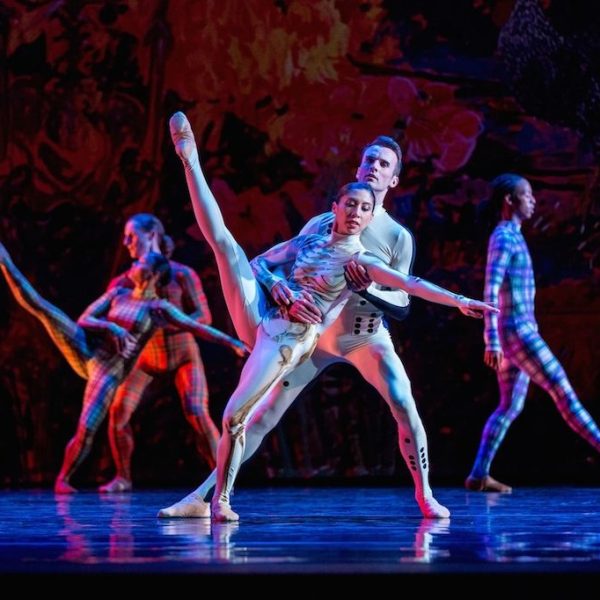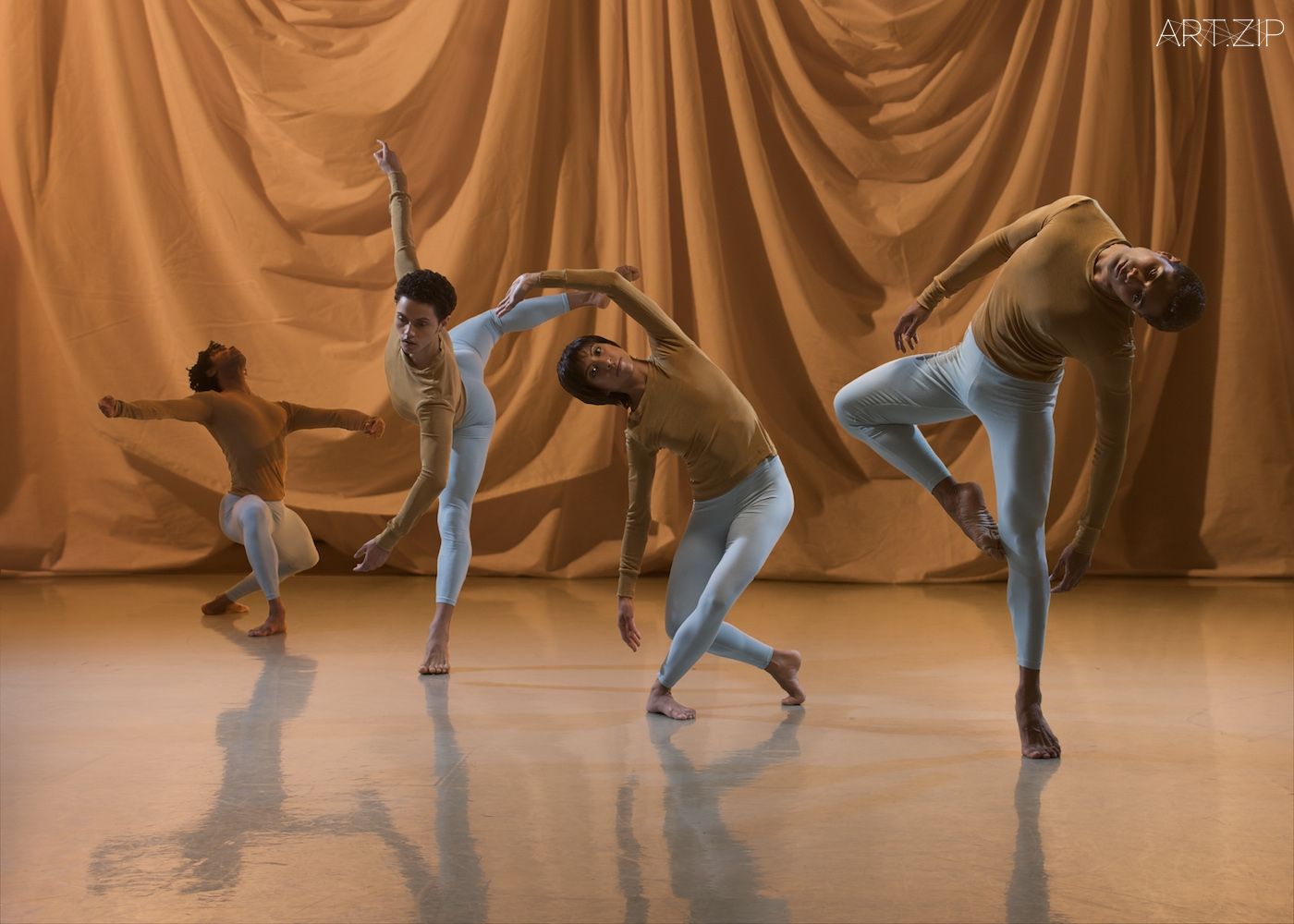
Text by: Michelle Yu / 撰文:余小悅
Translated and edited by: Harry Liu / 採訪整理:劉競晨
Founded by the Polish ballet dancer Maria Rambert in 1926, Rambert (previously known as Ballet Rambert before evolving to Rambert Dance Company) is one of the UK’s longest running and well-established dance companies. Whilst initially a purely ballet centred institution, they have advanced over the decades to become one that is focused primarily on contemporary dance, though their inclusion of a live orchestra into every piece they perform is a nod back to the traditions of the past. So valuable is the company’s work and influence within the UK’s dance scene that the Arts Council England donated £7 million pounds dedicated to the building of Rambert’s new home on London’s Southbank, which opened this past March in a glittering ceremony presided over by the Queen.
Mark Baldwin, Rambert’s artistic director since 2002, is an ex-dancer and choreographer who danced for Rambert for ten years. After leaving to work with Sadler’s Wells, he returned as the head of the company and is largely responsible for the reinvigoration of Rambert, commissioning new pieces to be performed every season which hinge upon collaboration and the fusion of different art forms.
Rambert are known throughout the dance industry as a company who deliver consistently on style and quality, and their oeuvre consists of a mix of revived pieces and newly devised ones. Clearly the thing that truly defines Rambert as a company is their commitment to the past and their acknowledgement of the influence that history has on the company’s work. Each programme consists of a broad mix of shows, from little known 20th century pieces, to revivals of well-loved classics, as well as innovative, beautifully devised contemporary spectacles. This sweeping approach to the world of dance demonstrates their company attitude: an attempt to create a wide spectrum of dance which can appeal to everyone and anyone.
1926年,波蘭芭蕾舞蹈演員瑪麗亞·蘭伯特(Maria Rambert)創建了蘭伯特芭蕾舞團,後來此舞團發展演變成為了今天的蘭伯特當代舞蹈劇團,蘭伯特是英國歷史最為悠久且極富盛名的舞蹈公司。雖然最初蘭伯特只是一個純粹以芭蕾舞為中心的機構,但他們很早就開始關注當代舞蹈,經過幾十年的發展,他們現在已經成為了最為前衛的、以當代舞蹈為主要方向的團體,但他們仍然保留了使用現場樂團為演出伴奏的傳統形式,這也是他們對自己過往傳統的一種傳承和禮敬。蘭伯特舞蹈劇團對英國舞蹈領域產生了重大的影響和作出了卓越的貢獻,英格蘭藝術委員會為其捐贈了七百萬英鎊用於其購置位於泰晤士南岸的新總部,今年三月蘭伯特新址正式啟用,英女王伊麗莎白二世出席了此次極具意義的慶典並為啟用揭彩。
馬克·鮑德溫(Mark Baldwin)從2002年開始出任蘭伯特的藝術總監,他曾經以舞者和編舞的身份在蘭伯特舞團工作了十年,後來鮑德溫到薩德勒威爾斯劇場工作(Sadler’s Wells)。當他再次回到蘭伯特的時候,他成為了公司的主要領導者并帶領蘭伯特一步一步發展壯大。在他的帶領下,每季度蘭伯特都有新的舞蹈作品問世,這些作品均融合了各種不同的藝術形式。
在舞蹈界,蘭伯特以獨特的作品風格和高質量的製作而著稱,他們的作品包括了重新製作的過往劇目和新設計製作的劇目。顯而易見,正是其對舞蹈發展歷程作出的貢獻和承諾,以及其一直致力於製作具有影響力的作品的意念塑造了蘭伯特這個品牌,每一季的演出都涵蓋了各個類別的作品:有鮮為人知的上世紀舞蹈作品,也有家喻戶曉的經典作品,還有充滿創新和設計精美的當代改編劇目。蘭伯特這種對舞蹈世界各個方向兼容並包的創作手段展示了他們特有的藝術觀點:試圖建立一個最為廣泛的舞蹈譜系,可以讓每一個人,讓任何人都參與和融入到舞蹈的世界當中。
Interview with Mark Baldwin, Rambert’s artistic director
專訪蘭伯特舞團藝術總監馬克·鮑德溫
ART.ZIP: Would you please tell us about this photographic project with Marcus, how does it start? What’s the story?
MB: I was introduced to Marcus by Angela Towler the Rehersal Director at Rambert and a former lead dancer in the company. I visited Marcus at his studio in London to witness his work created from multiple layers of images – thrilling to look at and full of delicious detail. He and Angela had dreamt up the idea to make images that depict a whole dance work in a single image. The prototype rehearsal montage appeared in the eyewitness pages of the Guardian newspaper and we have continued to collaborate on both my new work The Strange Charm of Mother Nature and the extraordinary Four Elements by Lucinda Childs.
ART.ZIP: 你們最近和攝影藝術家馬可斯一起合作創作了一副宏大的攝影作品,什麼促使了這個想法的呢?
MB: 我是通過舞團的排練總監安琪拉·特拉認識了馬可斯。當時我們一起拜訪了馬可斯的工作室,觀看了他獨特的多影像攝影作品——每一張作品的細節都那麼吸引,讓人琢磨。安琪拉和馬可斯萌生了一個有趣的點子,把一個完整的舞蹈作品呈現在一張獨立的攝影作品裡,這至少需要拍攝3000張照片。這個合作項目的第一版作品被刊登在《衛報》上,然後我們又繼續合作發展了另外兩幅,拍攝主體是我的新作《大自然的奇特魅力(The Strange Charm of Mother Nature)》,還有露辛達·查爾德斯的《第四元素(The Four Element)》。
ART.ZIP: Do you collaborate with other artists too? Any interesting projects to name?
MB: We do collaborate with visual artists including Kader Attia (The Comedy of Change), Mat Collishaw (Labyrinth of Love), Katie Paterson (Strange Charm of Mother Nature), Gerhard Richter (Rambert Cunningham Event), Mark Lancaster (Sounddance) and Jennifer Bartlett (Four Elements). We have moved into a new building and have permanent art installed by Goshka Macuga, Abigail Reynolds, Gary Breeze and Catherine Yass. The company also engages theatre designers such as Jon Morrell (Subterrain), Jon Bauser (The Castaways) and Jean-Marc Puissant (Terra Incognita) and a feature film designer Michael Howells (What Wild Ecstasy).
ART.ZIP: 你們也曾經與其他藝術家合作過嗎?有哪些有意思的項目呢?
MB: 我們和很多視覺藝術家有過合作,比如和卡德爾·阿提亞(Kader Attia)合作的《關於“變”的喜劇(The Comedy of Change)》;與馬特·科里肖(Mat Collishaw)合作的《愛情的迷宮(Labyrinth of Love)》,與凱蒂·帕特森(Katie Paterson)合作的《大自然的奇特魅力(Strange Charm of Mother Nature)》,還有格哈德·里希特(Gerhard Richter)、馬克·蘭卡斯特(Mark Lancaster)、詹妮弗·巴特利特(Jennifer Bartlett)等等。我們現在搬到了新的場地,這裡我們陳列了很多藝術作品,包括戈什卡·馬庫加(Goshka Macuga)、阿比蓋爾·雷諾茲(Abigail Reynolds)、加里·布瑞茲(Gary Breeze)和凱瑟琳·亞斯(Catherine Yass)等人的作品。我們公司也和很多劇場設計師合作,比如喬恩·莫雷爾(Jon Morrell)、喬恩·巴澤爾(Jon Bauser)和讓﹣馬克·布呂松(Jean-Marc Puissant),還有專題影片設計師邁克爾·豪厄爾斯(Michael Howells)。
ART.ZIP: How would you define the Rambert company ethos?
MB: I am the artistic director of Rambert and studied fine art at university so artists are very important to me. Marie Rambert who founded this company in 1926 after having worked with Ballet Russe and Sergei Diaghilev where she was taught that to make original works for the stage involves introducing a choreographer to a composer and an artist. This is the template to create something new for the stage as those three artists collaborate to make something more power than they could do individually. This triangle is the basic ethos we still use to generate new works for today.
We have spent the last ten years training new choreographers which is an important part of the company’s work. Usually these emerging choreographers come from a pool of dancers working in the present company. In 2016 we hope to have a whole programme at Sadler’s Wells dedicated to launching three of these choreographers.
ART.ZIP: 你會怎麼描述蘭伯特基本的理念呢?
MB: 我現在是蘭伯特的藝術總監,我大學是學純藝術的,所以藝術家對我來說格外的重要。瑪麗·蘭伯特1926年成立了這個公司,在那之前她曾經為俄羅斯芭蕾舞團和謝爾蓋·佳吉列夫芭蕾舞團工作過,也正是在那裡,她認識到要將一部原創作品帶上舞臺需要編舞、編曲和藝術家共同合作,這三者的有機合作和努力是舞臺表演創作的基本配備,他們的合作和碰撞能創造出遠遠超越其個體能力的作品。這種“鐵三角”的形態依然是我們當下創作新作品的基本原則。
在過去的10年裡,我們一直致力於培養和訓練年輕的編舞人才,這也是我們公司非常重要的一項工作。通常來說,這些年輕的編舞人才都是來自於現有舞蹈團的舞者。在2016年,我們希望能在薩德勒威爾斯劇場上演三部全新編舞的作品。
ART.ZIP: How do you choose what you want to perform? Are there certain elements a piece must have?
MB: We perform three works in one evening which is traditionally called a triple bill. The triple bills act to give the performance a range of ideas, musically, visually and physically. I’ve often likened this experience to a superb meal – first course, main course and pudding (although not necessarily sometimes in this order). I am looking for works which engage audience members who have never seen dance before and also work that is for those audience members who are very familiar with our art form. Depending on which theatres we tour to our programmes change. We perform twice a year in London and need four new works a year. We have also taken on extra special projects which are larger than the pieces I have mentioned for instance a site specific work such as the Rambert Cunningham Event performed in our new building with sets and costumes by Gerhard Richter, with music by Phil Selway from Radiohead. We are at present in negotiations with the artist Pablo Bronstein about staging Haydn’s The Creation. The programmes should challenge the dancers, keeping them on top form. The programme should also cater to the three different audiences we play to; inside London, outside London (they really are different worlds) and abroad. The two seasons we show in London a year are at Sadler’s Wells, a major international dance receiving house. The new programmes should help to show off how good our dancers are and differentiate our repertoire in a crowded market. The founder of the company, Marie Rambert, described the company as the Tate Modern of dance, which puts up different pictures to show its audiences rather like a changing exhibition. I can choose historic works such as Merce Cunningham, Richard Alston, Lucinda Childs, Frederic Ashton and Anthony Tudor. Alongside established choreographers with the introduction of separate performances for aspirant choreographers and showings of work in progress in our large studio. we have an archive which shows that contemporary dance in this country has a history. My feeling is that it is important to refer this resource rather like art history is reflected in contemporary art exhibitions and work. For my part the work must be good on all levels; art on stage, music (very important for Rambert, we have our own orchestra) and the dancing fabulous with an ability to engage audiences in different ways.
ART.ZIP: 你們是如何選擇演出劇目的呢?有沒有什麼要素是必須要考量的?
MB: 我們在一個晚上會演出三個劇目,傳統上來說,我們把這種演出叫做“三聯單”,這種演出形式可以給觀眾更多的體驗,從不同的演出創意、音樂風格、視覺體驗和實際感受上都能有不同的體驗。我經常把這種體驗比喻為吃一次“大餐”──頭盤、主菜、甜點(當然,有時候並不一定是按照這樣的順序。)我們要選擇的劇目需要從兩方面來滿足我們的觀眾,一方面要能夠激起那些第一次觀看舞蹈劇目的觀眾的興趣,同時在另一方面,又可以滿足那些熟悉舞蹈藝術的觀眾。根據我們巡演場地的不同,我們也會調整我們的演出劇目。每年我們在倫敦有2個演出季,而每年我們都需要準備4部新作品。有時候,我們也有一些特別的活動,比如我提到的,我們的蘭伯特·坎寧安活動(Rambert Cunningham Event),這活動比我們通常的演出規模都要大,演出的佈景和服裝是由藝術家格哈德·里希特(Gerhard Richter)設計的,音樂則是“電臺司令(Radiohead)”的菲爾·塞爾韋(Phil Selway)負責,目前,我們正在和藝術家巴勃羅·布朗斯坦(Pablo Bronstein)在討論如何將海頓的《創世紀》帶到舞臺之上。我們的演出安排需要挑戰所有舞者,讓他們保持在最佳的表演狀態,同時我們的演出還要考慮到三類觀眾,倫敦的觀眾,倫敦外的觀眾(英國以內,倫敦以外的觀眾,他們真的是另外一群完全不同的觀眾),海外觀眾。我們每年兩次的演出是在薩德勒威爾斯劇場,這裡是展示國際範圍舞蹈的主要陣地。我們新一季的演出將會給觀眾展現我們舞者的卓越技巧,某種程度上這也是在炫耀我們的演員是多麼的優秀,這也正是讓我們在這個競爭激烈的領域中獨樹一幟的原因。蘭伯特的創始人瑪麗·蘭伯特把自己的公司形容為“舞蹈界的泰特現代美術館”,通過我們的作品來梳理舞蹈發展史。我會選擇很多歷史上重要的作品,如梅爾切·坎寧安(Merce Cunningham)、理查德·阿爾斯通(Richard Alston)、露辛達·查爾德斯(Lucinda Childs)、弗雷德里克·阿什頓(Frederic Ashton)和安東尼·都鐸(Anthony Tudor)。在成名的編舞作品展示的同時,我們也會安排獨立的介紹新銳編舞藝術家的作品,並在我們的排練室裡展示他們的作品。我們也擁有當代舞蹈的檔案資料,見證了當代舞蹈在這個國家發展的整個歷程。作一個類比,這就好像藝術史在當代藝術發展和展覽當中所扮演的重要角色是一樣的。對我來說,所選擇的作品必須在各個方面都很完美,舞臺表現力、音樂(這點對我們非常重要,我們有自己的現場樂隊)、無與倫比的舞蹈──必須擁有用不同方式打動觀眾的能力。
ART.ZIP: How has Rambert achieved such longevity as a company? What’s the most difficult part or stage you’ve been through?
MB: The global financial crisis has affected our funding and audiences. Searching for the combinations of programmes, looking for artists who have the ability to reach out to an audience, using music which is intelligent, flamboyant and thrilling is also important.
ART.ZIP: 蘭伯特公司長盛不衰的秘訣是什麼?蘭伯特的發展中是否也有過艱苦卓絕的階段?
MB: 前幾年的全球經濟危機確實影響了我們的資金籌措,觀眾量也受到了影響。對於公司來說,開發好的合作劇目,挖掘那些有能力吸引觀眾的藝術家,恰到好處的音樂運用,讓節目充滿智慧、個性張揚,充滿驚奇都是我們公司成功的關鍵。
ART.ZIP: How does the creative process develop from conception to opening night?
MB: We give visiting choreographers usually about six weeks to create a piece, which can be from 20 minutes to almost an hour. A choreographers in practice will talk to their composer and choreographer long before they begin rehearsals in the studio. Our conductor, Paul Hoskins, will need to liaise with the composer to engage musicians for the tour and have the score copied out while the sets, backcloth, costumes are made and fitted during this period. The last thing to be added is the lighting designer. The choreographers have the choice of choosing from a pool of 22 dancers, 11 female and 11 male dancers.
ART.ZIP: 在一個節目從觀念成型到最後展現在大家面前,這是一個怎麼樣的過程呢?
MB: 我門會給編舞6周的時間來完成一個作品,長度在20分鐘到一個小時。在實際操作中,編舞會和編曲一起合作,但編舞的構思和準備工作早在排練之前很久便已經開始了。我們的演出指揮保羅·霍斯金斯(Paul Hoskins)需要安排編曲和演奏人員進行溝通,為巡演作準備,也要安排其他各類的後勤工作。最後,燈光設計師也會加入進來,完成現場燈光的設計。編舞會在我們22位舞者當中挑選演出的人員,我們有11位男舞者和11位女舞者。
ART.ZIP: Rambert is a dance company that’s almost 100 years old and it’s clearly evolved throughout the decades. Where do you imagine Rambert will take their audiences next?
MB: Every decade sees the company engage with different ideas in movement. The present dancers are quite punchy, strong and fit and are kept at a technical pitch. I envisage the company’s technical expertise will take the audiences in new directions as we engage artists and composers to situate them in the times we live and to develop a vocabulary of movement material that embraces abstract and emotional issues, ideas to do with space and time and comment on dances own history. For instance a contemporary responses to a historic work. In contemporary art terms where contemporary music and contemporary dance meet the every changes ideas and concepts in contemporary art. The development of sports medicine and dance technique to allow the dancers who have a much larger physical range and stamina. And the continual development of emerging choreographers.
ART.ZIP: 蘭伯特舞團從成立至今已經走過了快一個世紀的歷程,您覺得下一步舞團的方向將是會怎樣?
MB: 每個不同的歷史時期,舞團都着眼於不同的藝術風潮和運動。當下的舞者都極具衝擊力,強壯而健美,並且都有很棒的技術功底。我覺得下一步舞團將會引領觀眾到一個新的領域,我們將藝術家和編曲設定在探討我們所處時代和生活,抽象的概念和情感問題將是非常重要的關鍵詞,我們會將創意與時間空間相結合,當然也會遵循舞蹈藝術發展的本身邏輯。舉例來說,我們會嘗試用當代精神來詮釋歷史經典作品。從當代藝術角度來看,當代舞蹈和當代音樂的結合,將會給當代藝術的理念帶來新的可能性。當代的運動醫學以及舞蹈技術的發展,也讓舞者擁有了更寬廣的表現力,當然,與編舞的持續和密切協作也是方向之一。
ART.ZIP: What can dance express to an audience that other mediums cannot?
MB: Dance can express the high thrills of watching humans move in musical time like athletes of the theatre. Dance can engage an audience’s emotional response through pure movement. Dance can show the breadth and variety of qualities found in music. Dance has capabilities of flashing up over time a whole variety of feelings and worlds. Dance can speak directly to our primitive selves, physicalizing ecstasy, abandonment and despair, need I add pure happiness etc.
ART.ZIP: 與其他藝術形式比較,在藝術表達上來說,舞蹈有哪些獨特的優勢?
MB: 舞蹈可以讓觀眾感受到直觀的緊張與刺激,當人們觀看在音樂中起舞的肢體,就和觀看競技體育的感受非常相似;舞蹈可以通過純粹的肢體動作來激發觀眾的情感共鳴;舞蹈結合音樂,可以展現樂曲的廣度和多樣性的特質;舞蹈是一種轉瞬即逝的形式,但通過它,人們可以體味時間的流逝和世間各種不同的感受;舞蹈可以讓我們直面本我,不論是狂喜、失落、絕望,當然還有那純粹的快樂與幸福。

